The Suppressed Story of the CIA, the Mafia, and George Bush's Multi-Billion Dollar Heist
https://thememoryhole.substack.com/
Pete Brewton is an investigative journalist and author best known for his book "The Mafia, the CIA, and George Bush." Published in 1992, the book details the connections between the financial and political elite in the United States, including the Mafia, the Central Intelligence Agency (CIA), and George H.W. Bush, who was Vice President at the time.
Brewton's book delves into the Savings and Loan Crisis of the 1980s, which was one of the largest financial scandals in American history. The crisis involved the collapse of numerous savings and loan institutions, costing taxpayers billions of dollars. Brewton argues that the crisis was the result of a massive conspiracy involving organized crime figures, CIA operatives, and high-level politicians, including George H.W. Bush.
According to Brewton, the scandal involved the funneling of billions of dollars of illegal drug profits into savings and loan institutions, which were then used to finance covert CIA operations around the world. The book also suggests that Bush, who had extensive connections to the CIA and the banking industry, played a key role in the conspiracy.
Brewton's book was controversial when it was first published, and it received mixed reviews from critics. Some praised Brewton for his exhaustive research and hard-hitting reporting, while others accused him of making unfounded and sensationalistic claims. Nevertheless, the book remains a seminal work in the field of investigative journalism, and it continues to be cited and debated by scholars and researchers interested in the intersection of politics, finance, and organized crime in the United States.
One of the most widely cited connections between Bush and drug trafficking involves his time as the head of the CIA in the 1970s. During this period, the CIA was involved in various covert operations around the world, including supporting anti-communist groups in Central and South America. Some of these groups were allegedly involved in drug trafficking to fund their activities, and it has been suggested that the CIA turned a blind eye to these activities in order to achieve its larger political goals.
In addition to these allegations, there have been rumors of Bush's connections to drug traffickers in his home state of Texas. Some have claimed that he was involved with figures such as Carlos Marcello and Manuel Noriega, both of whom were known for their involvement in the drug trade.
Pete Brewton is an American journalist and author who is best known for his groundbreaking book "The Mafia, CIA and George Bush". He was born on December 8, 1946, in Texas, United States.
Brewton attended the University of Texas at Austin, where he earned a degree in journalism. He then began his career as a reporter for the Houston Chronicle, covering a wide range of topics from local news to national politics. His work as a journalist led him to uncover a complex web of relationships involving the CIA, the Mafia, and some of the most powerful figures in American politics.
In 1989, Brewton published his book "The Mafia, CIA and George Bush", which exposed the inner workings of the Savings and Loan scandal of the 1980s. The book showed how the CIA and the Mafia worked together to loot billions of dollars from the Savings and Loans, and how powerful politicians and business leaders were involved in the scandal.
Despite the importance of his findings, Brewton's book was largely ignored by the mainstream media and received little attention from the public. However, his work has been praised by other investigative journalists and scholars as a significant contribution to the understanding of political corruption in the United States.
After the publication of his book, Brewton left journalism and became a professor of journalism at Texas Tech University, where he taught for over two decades. He also continued to conduct research and investigations into political corruption and has written several articles on the topic.
Overall, Pete Brewton's career as a journalist and author has been dedicated to uncovering the truth about political corruption in the United States, and his work has had a lasting impact on the field of investigative journalism.
Rafael "Chi Chi" Quintero Ibaria (September 16, 1940 – October 1, 2006) was a CIA operative.
Biography
Quintero was born in Camagüey, Cuba on September 16, 1940.[1] In the 1950s, he joined the resistance movement against Cuban dictator Fulgencio Batista.[1] A few days prior to the Cuban Revolution he joined Fidel Castro's group in the Sierra Maestra.
After becoming dissatisfied with the Castro regime, he joined Manuel Artime against Castro. Artime's group was supported by Frank Sturgis and the CIA as related by Fabian Escalante in CIA Covert Operations: 1959 - 1962. Sturgis flew a CIA plane over Havana, dropping thousands of pamphlets urging the Cuban people to overthrow the Castro regime on October 21, 1959, as part of Artime's operations. About December 1959, Manuel Artime left Cuba with a hundred thousand pesos when nothing happened. Quintero moved to the United States the next month.[citation needed]
On June 5, 1960, The Movement for the Recovery of the Revolution or (MRR) was created by Manuel Artime, Tony Varona, Aureliano Arango, José Miró Cardona and Quintero. Around the same time, Quintero became a member of Operation 40 along with other anti-Castro Cubans. In 1961 Quintero secretly re-entered Cuba and was arrested just before the Bay of Pigs Invasion, was released and returned to the U.S.[citation needed]
Rafael Quintero served as deputy leader of MRR under Artime in 1962. Manuel Artime got money from the CIA through Theodore Shackley in 1963. Artime, Quintero and Félix Rodríguez moved to Nicaragua creating an army of 300 men and obtained weapons, supplies and boats to invade Cuba.[citation needed]
Quintero died in Baltimore, Maryland after a history of kidney failure.[1]
Further reading
Pete Brewton, The Mafia, CIA and George Bush, 1992 ISBN 1561712035
https://en.wikipedia.org/wiki/Rafael_Quintero
Pete Brewton teaches journalism and law at Texas Tech University in Lubbock, Texas.[1] Brewton is best known for an investigative journalism series he wrote for the Houston Post that were the basis of a book, The Mafia, CIA and George Bush. He is a journalist with 15 years reporting experience at the Houston Chronicle and the Houston Post. He practiced law in Houston for five years.[2]
Pete Brewton holds a bachelor's degree in philosophy from Rice University, a master's degree in astronomy from New Mexico State University, a master's degree from the American Graduate School of International Management, and a law degree from the University of Texas. He travels frequently to help with his mother's working cattle ranch in Lampasas County.[3] He is author of a 2006 novel, Lone Star Law.[2]
In 1986 he co-won 2 Matrix Awards for his story on "Hermann Hospital Estate" with Mary Flood, and for his story with John Mecklin on County Commissioner Bob Eckels, both in the investigative/interpretive category.[4]
The Mafia, CIA and George Bush
He is the author of the book The Mafia, CIA and George Bush, which is based on his investigations of powerful Texas businessmen, politicians, and their connections to the savings and loans scandals of the 1980s.[5] The book grew out of an 8-part investigative reporting series that ran in the Houston Post, a series that the Seattle Times columnist John Hinterberger described as "a bombshell series backed up by eight months of investigation."[6] The series won the Galvaston Press Club award for best investigative series.[7] In 1991 PEN awarded the Journalism prize to Brewton, "Awarded for his series on the Savings & Loan scandal," in the Houston Post.[8]
Andrew Ferguson of the Weekly Standard characterized Brewton's book as one of a series of anti-Bush books "written in Texas by veteran Texas activists who have grown bitter from the endless frustration and resentment that is their unhappy lot." Andrew Ferguson was a speech writer for George H. W. Bush in 1992.[9] Brewton promoted the book on Alternative Views.[10]
Texas politician Jon Lindsay took out a newspaper advertisement to discredit Brewton's book.[11]
References
"Faculty page". depts.ttu.edu. Texas Tech. Retrieved 12 May 2015.
Dromgoole, Glenn (24 December 2006). "Texas authors offer variety of work". Beaumont Enterprise. ProQuest 373389415.
back cover of Lone Star Law (Paperback) by Pete Brewton (Author)
"Chronicle garners 3 Matrix Awards". Houston Chronicle. 14 May 1986. ProQuest 295250788.
Bethell, James (19 December 1993). "Once he was a 'billionaire': now divorce has put him in jail;John Dick". Times of London. ProQuest 318053570.
Hinterberger, John (12 August 1990). "Who Will Ask Hard Question: Where is It All?". Seattle Times. ProQuest 384718857.
"GDN Photographer Rizzo's Work Wins First Place". Galvaston Daily News. 29 March 1990. Retrieved 12 May 2015.
"past winners". penusa.org. Pen Center USA. Retrieved 13 May 2015.
Ferguson, Andrew (25 October 2004). "The Birthplace of Bush Paranoia". Weekly Standard. ProQuest 232989926.
"MLK's dream lives on in special broadcasts". Austin American Statesman. 10 January 1993. ProQuest 256215818.
"Sorting it all out: Lies, reporters, books and elected public officials". Houston Chronicle. 30 July 1993. ProQuest 391836567
https://en.wikipedia.org/wiki/Pete_Brewton
Thomas Gregory Clines (August 18, 1928 – July 30, 2013[1]) was a Central Intelligence Agency covert operations officer who was a prominent figure in the Iran-Contra Affair.
Background
Clines served in the 1950–1953 Korean War, and was awarded the Korea Service Medal with four Bronze Stars, and the Combat Infantryman Badge; his unit also received the Distinguished Unit Citation.[1]
CIA career
In the 1950s Clines worked at the CIA's Technical Services Division in Frankfurt.[2]
As a CIA agent, between 1961–1962, Clines was involved in covert operations in Cuba. Clines later joined Ted Shackley, David Atlee Phillips and David Sanchez Morales at JM WAVE, the CIA's operational headquarters in Miami, Florida for the Cuban Project also known as Operation Mongoose, a project to overthrow the government of Fidel Castro in Cuba.
During this period, beginning shortly after the 1961 Bay of Pigs Invasion, Clines developed a personal friendship with Nicaraguan President Anastasio Somoza Debayle, after his father, Anastasio Somoza Garcia, allowed the CIA to train anti-Cuban rebels in the country.[3]
Between 1966–1970, during the Vietnam War, Clines worked as Ted Shackley's deputy in charge of the CIA's secret war in Laos.[2]
Clines left Laos in 1970 and spent a year at the Naval War College in Newport, Rhode Island.
In 1972, Clines was put in charge of CIA operations in Chile, and in 1973, he helped Augusto Pinochet overthrow Chile's democratically elected president, Salvador Allende.
While working on the attempt to undermine the government of Fidel Castro in Cuba, Clines became friends with Rafael Quintero ("Chi Chi"). When he was given responsibility for Nicaragua in 1978, Thomas Clines recruited Quintero to help the CIA in its efforts against the socialist Sandinista National Liberation Front (FSLN) that governed Nicaragua. This included helping Anastasio Somoza Debayle to develop a counter-subversion program in the country.
After the CIA
In 1978, Clines left the CIA[4] and joined several other ex-CIA officials and contract operatives, including Rafael Quintero, Ted Shackley and Ricardo Chavez in establishing API Distributors.[5]
In 1979, Clines established International Research and Trade Limited in Bermuda. Later that year, he worked with Hussein Salem to provide Egypt with U.S. military hardware. He made "illicit millions" through EATSCO (the Egyptian American Transport and Services Corporation), but in prosecuting Edwin P. Wilson the U.S. government made a plea bargain that enabled him to escape prosecution, though he had to pay an addition $100,000 to settle civil claims.[6]
Iran-Contra
Clines, as well as Oliver North, Edwin Wilson and Richard Secord, were involved in the conspiracy to provide arms to the Contras, and Clines himself as a key player[4] in the web of business operations founded by Secord and Iranian arms dealer Albert Hakim known as the "Enterprise".
Trial
On February 22, 1990, Clines was indicted on four felony counts of underreporting to the IRS his earnings from his business enterprises for the 1985 and 1986 tax years by at least $260,000, and failing to disclose on his 1985 and 1986 tax returns that he had foreign overseas bank accounts. The prosecutors were Stuart E. Abrams, Geoffrey S. Berman and William M. Treanor.[4]
On September 18, 1990, Clines was found guilty of all charges.[4] On December 13, 1990, U.S. District Judge Norman P. Ramsey sentenced Clines to 16 months in prison, $40,000 in fines,[4] and Clines was ordered to pay the cost of the prosecution. The Fourth Circuit U.S. Court of Appeals in Richmond, Virginia, on February 27, 1992, upheld his convictions, and Clines served his prison sentence. Clines is the only Iran-Contra defendant to have served a prison sentence.[4]
Further reading
Brewton, Pete. The Mafia, CIA and George Bush, 1992. ISBN 1561712035
References
THOMAS GREGORY CLINES (Age 84), Death Notice, Washington Post, 2 August 2013
Joseph J. Trento, Prelude to Terror: Edwin P. Wilson and the Legacy of America's Private Intelligence Networks (Carroll and Graf, 2005), p34
Trento (2005:134)
Walsh Iran / Contra Report - Chapter 11 United States v. Thomas G. Clines, a.k.a. ``C. Tea Walsh Chapter 11: United States v. Thomas G. Clines, a.k.a. ``C. Tea ] - Lawrence Walsh's Iran-Contra report, 1993
Schneider, Keith; Times, Special To the New York (March 8, 1987). "North's Aides Linked to Australia Study". The New York Times.
Joseph J. Trento, Prelude to Terror: Edwin P. Wilson and the Legacy of America's Private Intelligence Networks (Carroll and Graf, 2005), 170, 261-62, & 267-68. It is the thesis of Trento's book that Clines helped Theodore Shackley run a private intelligence network in the post-Watergate period and participated in plotting to making Wilson appear to be an ex-CIA agent turned rogue. As part of this plot, Clines's involvement in EATSCO was covered up. See Chapter 29 of Prelude to Terror.
https://en.wikipedia.org/wiki/Thomas_G._Clines
HRG Group, Inc., formerly Harbinger Group Inc. and Zapata Corporation,[3] is a holding company based in Rochester, New York,[4] having originated from an oil company started by a group including future U.S. president George H. W. Bush. In 2009, it was renamed the Harbinger Group Inc.[5]
Early business history
The company traces its origins to Zapata Petroleum Corporation, founded in 1953 by future U.S. President George H. W. Bush, along with his business partners John Overbey, Hugh Liedtke, Bill Liedtke, and Thomas J. Devine. Overbey was a "landman" skilled in scouting oil fields and obtaining drilling rights cheaply. Bush and Thomas J. Devine were oil-wildcatting associates.[6][better source needed] Their joint activities culminated in the establishment of Zapata Oil.[7] The company was named for Viva Zapata!, a 1952 biographical film starring Marlon Brando as Mexican revolutionary Emiliano Zapata.[8] The initial $1 million (equivalent to $10,100,000 in 2021) investment for Zapata was provided by the Liedtke brothers and their circle of investors, by Bush's father Prescott Bush and his maternal grandfather George Herbert Walker, and their family's circle of friends. Hugh Liedtke was named president, Bush was vice president; Overbey soon left.
According to a CIA internal memo dated November 29, 1975,[7] Zapata Petroleum began in 1953 through Bush's joint efforts with Thomas J. Devine, a CIA staffer who had resigned his agency position that same year to go into private business, but who continued to work for the CIA under commercial cover. Devine would later accompany Bush to Vietnam in late 1967 as a "cleared and witting commercial asset" of the agency, acted as his informal foreign affairs advisor, and had a close relationship with him through 1975.[9]
In 1954, Zapata Off-Shore Company was formed as a subsidiary of Zapata Oil, with Bush as president of the new company. He raised some startup money from Eugene Meyer, publisher of the Washington Post, and his son-in-law, Philip Graham.[10][11]
Zapata Off-Shore accepted an offer from an inventor, R. G. LeTourneau, for the development of a mobile but secure drilling rig. Zapata advanced him $400,000, which was to be refundable if the completed rig did not function, followed by an additional $550,000 together with 38,000 shares of Zapata Off-Shore common stock when it did.
The U.S. government began to auction off mineral rights to the Caribbean, the Gulf of Mexico, and islands off the Central American coast in 1954, and in the late 1950s and early 1960, Zapata Off-Shore concentrated its business in these areas.[12] In 1958, drilling contracts with the seven largest U.S. oil producers included wells 40 miles (64 km) north of Isabela, Cuba, near the island Cay Sal.
In 1959 Bush bought control of Zapata Off-Shore, funded with $800,000,[13] splitting Zapata Corporation into two independent companies with the Liedtkes still in control of Zapata Petroleum. Bush moved his offices and family that year from Midland, Texas to Houston for access to the Caribbean through the Houston Ship Channel.[14][better source needed] But although Zapata Offshore had only a few drilling rigs, Bush set up operations also in the Gulf of Mexico, the Persian Gulf, Trinidad, Borneo, and Medellín, Colombia, and the Kuwait Shell Petroleum Development Company was among the company's clients.[15][better source needed]
In 1960, Jorge Díaz Serrano of Mexico was put in touch with Bush by Dresser Industries. Dresser was owned by Prescott Bush's Yale friends Roland and W. Averell Harriman, and had been George H.W. Bush's first employer upon his graduation from Yale, giving him his start in both the oil business and the defense contractor business.[16][better source needed] Serrano and Bush created a new company, Perforaciones Marinas del Golfo, aka Permargo, in conjunction with Edwin Pauley of Pan American Petroleum, with whom Zapata had a previous offshore contract. The deal with Permargo is not mentioned in Zapata's annual reports, and SEC records are missing. In 1988, a Bush spokesman claimed that the deal lasted only from March to September 1960. However, Zapata sold the oil-drilling rig Nola I to Pemargo in 1964.[citation needed]
Zapata's filing records with the U.S.Securities and Exchange Commission are intact for the years 1955–1959, and again from 1967 onwards. However, records for the years 1960–1966 are missing. The commission's records officer stated that the records were inadvertently placed in a session file to be destroyed by a federal warehouse, and that a total of 1,000 boxes were pulped in this procedure. The destruction of records occurred either in October 1983 (according to the records officer), or in 1981 shortly after Bush became Vice President of the United States (according to, Wison Carpenter, a record analyst with the commission).[17]
During the Bay of Pigs invasion and the Cuban Missile Crisis, Zapata allowed its oil rigs to be used as listening posts.[18] In 1988, Barron's said Zapata was "a part time purchasing front for the [Central Intelligence Agency]."[18]
In 1962, Bush was joined in Zapata Off-Shore by Robert Gow.[19] By 1963, Zapata Off-Shore had four operational oil-drilling rigs—Scorpion (from 1956, the first oil-drilling jackup rig ever built), Vinegaroon (from 1957), Sidewinder, and (in the Persian Gulf) Nola III.
In 1963, Zapata Petroleum merged with South Penn Oil to become Pennzoil.
By 1964, Zapata Off-Shore had a number of subsidiaries, including: Seacat-Zapata Offshore Company (Persian Gulf), Zapata de Mexico, Zapata International Corporation, Zapata Mining Corporation, Zavala Oil Company, Zapata Overseas Corporation, and a 41% share of Amata Gas Corporation.
In 1964, Bush ran for the United States Senate, and lost; he continued as president of Zapata Off-Shore until 1966, when he sold his interest to Doyle Mize and ran for the U.S. House of Representatives.
On September 9, 1965, Hurricane Betsy struck the coast of Louisiana sinking the oil rig Maverick.[20] There were no deaths, however, $8 million in Zapata assets were lost.[20] A helicopter flew Bush over the area for several days until debris was located.[20] After evidence was submitted to Lloyd's of London for the loss, they paid Zapata for the claim.[20]
In 1966, William Stamps Farish III, age 28, joined the board of Zapata.[citation needed]
Decline
Zapata sought to acquire a controlling interest in the United Fruit Company in 1969, but was outbid by Eli M. Black's AMK Corp.[21] Robert Gow's father, Ralph Gow, was on United Fruit's board of directors.
In the 1970s, under chairman and CEO William Flynn, Zapata expanded its business to include subsidiaries in dredging, construction, coal mining, copper mining and fishing.
By the late 1970s, saddled with weak operations, high debt and low return on investment, the company again began undergoing changes in management and direction. Led by John Mackin, who succeeded William Flynn, the company began selling off some of those businesses and refocused on offshore oil and gas exploration and production.
In 1982, chief operating officer Ronald Lassiter assumed the role of CEO, and presided over a decade of loss-making brought on by the collapse of oil prices. In 1982, Zapata Off-shore became Zapata Corporation. Its stock performed poorly. By 1986, Zapata was one of the bad loans that shook the foundations of San Francisco-based Bank of America, with a debt of more than $500 million and a fiscal year loss of $250 million. The company announced several restructurings during those years and managed to stave off bankruptcy, but continued to incur major losses. In 1990 the oil drilling company proposed selling its entire fleet of offshore drilling rigs to focus solely on fishing. The company had not had a profitable quarter in more than five years.
In 1990, Zapata Offshore sold 12 of its drilling rigs to Arethusa Offshore, which a few years later merged with Diamond Offshore. Still struggling with debt by 1993, Zapata signed a deal with Norex America to raise more than $100 million through a loan and stock sale. But financier Malcolm Glazer, owner of the NFL franchise Tampa Bay Buccaneers and Premier League club Manchester United, and at the time owner of 40 percent of Zapata, did not want his holdings diluted and filed a lawsuit to block the deal.
Glazer era and the birth of Harbinger Group Inc.
By 1994, the company had come under Glazer's control, after a proxy fight. Glazer became chairman of Zapata, replacing Ronald Lassiter, and in 1995 Avram Glazer, son of Malcolm, was named CEO and president of Zapata.[22] De facto headquarters moved from Houston to Rochester, New York. It no longer engaged in exploration, but owned several natural gas service companies. It also produced protein products from the menhaden fish.[23] In subsequent years Zapata sold its energy-related businesses and focused on marine protein.
Between 1998 and 2000, Zapata tried to position itself as an internet media company under the "zap.com" name. In July 1998, Zapata announced its plans to acquire several web sites, including ChatPlanet, TravelPage and DailyStocks.com.[24][25] The company's stock boomed and crashed along with other dot-coms, and on January 24, 2001 the company conducted a 1 for 10 reverse stock split.[26] The venture was cited by many investment journalists as an example of a company jumping on the internet bandwagon without any relevant experience. This period is probably best remembered for Zapata's unsolicited (and unsuccessful) takeover bid of the Excite internet portal.[27]
During this period, Zapata also built up a controlling stake in Safety Components International, a manufacturer of air bag fabrics and cushions.
On December 2, 2005, Zapata Corporation Chairman, Avram ("Avi") Glazer, announced the sale of 4,162,394 shares, 77.3%, of Safety Components International to Wilbur L. Ross Jr. for $51.2 million.[28] The company sold its remaining stock in Omega Proteine on December 1, 2006, leaving it with no active subsidiary.[29] The Glazer family sold its controlling stock of the Zapata Corporation to Philip Falcone's Harbinger Capital in 2009,[30][31] and the company's name was changed to Harbinger Group Inc. with the ticker symbol HRG on the NYSE.[32] In 2010–2011, Harbinger Capital Partners LLC transferred its 54.4% interest in Spectrum Brands to Harbinger Group Inc. giving the company controlling interest in that company.[33][34] Also in 2011 Harbinger Group Inc. acquired the insurance company Old Mutual U.S. Life Holdings, Inc. from Old Mutual.[35][33]
In December 2013, Salus Capital (a unit of Harbinger Group) and Cerberus Capital Management issued a quarter-billion dollars in financing to struggling retailer RadioShack Corporation.[36][37][38] Among the terms of this deal were restrictions which prevented RadioShack from closing more than 200 of its 4275 company-owned retail stores a year and limited its ability to refinance, which proved to be a key obstacle leading to that firm's February 2015 Chapter 11 bankruptcy as the chain was forced to keep more than a thousand unprofitable stores open.[39][40][41] Fidelity & Guaranty Life, the insurer backed by Harbinger Group, also has a $50 million stake in the RadioShack bankruptcy.[42][43] An impairment of $105.0, out of the $150 million net exposure, recognized as of March 31, 2015.[44]
References
"HRG Group". Forbes.
"Future of HRG Group | Quantumrun". Archived from the original on June 15, 2020. Retrieved June 15, 2020.
"Harbinger Group Inc, Form 8-K, Current Report, Filing Date Mar 11, 2015" (PDF). secdatabase.com. Retrieved April 25, 2018.
admin-dt (November 23, 2017). "Quantumrun company rankings". Quantumrun. Retrieved June 15, 2020.
"Harbinger Group Inc, Form 8-K, Current Report, Filing Date Dec 28, 2009" (PDF). secdatabase.com. Retrieved April 25, 2018.
Baker, Russ, Family of Secrets (New York: Bloomsbury Press, 2009) p. 13.
Withheld (sanitized, unclassified document), Central Intelligence Agency (November 29, 1975). "Memorandum: To: Deputy Director of Operations; Subject: Messrs. George Bush and Thomas J." NARA Record Number: 104-10310-10271.
Schoenfeld Walker, Amy; Marsh, Amy (December 1, 2018). "George Bush's Life in 13 Objects". The New York Times. Retrieved December 1, 2018.
"MEMORANDUM:MESSRS. GEORGE BUSH AND THOMAS J. DEVINE", 3 pp.
Hasty, Michael (February 5, 2004). "Secret admirers: The Bushes and the Washington Post". Online Journal. Archived from the original on April 5, 2004.
Perin, Monica (April 23, 1999). "Adios, Zapata! Colorful company founded by Bush relocates to N.Y." Houston Business Journal.
King, Nicholas (1980). George Bush: A Biography. Dodd Mead. ISBN 0-396-07919-9.
"Zapata Oil Files, 1943–1983". George Bush Personal Papers. George Bush Presidential Library. Archived from the original on August 20, 2007.
Russ Baker, Family of Secrets (New York: Bloomsbury Press, 2009) p. 36.
Russ Baker, Family of Secrets (New York: Bloomsbury Press, 2009) p. 35.
Russ Baker, Family of Secrets (New York: Bloomsbury Press, 2009) pp. 23–28.
Jonathan Kwitny, "The Mexican Connection: A look at an old George Bush business venture", Barron's September 19, 1988. Cited with further discussion by Russ Baker, Family of Secrets (New York: Bloomsbury Press, 2009) pp. 37 and 503.
Bardach, Ann Louise Bardach (2009). "The Island and the Empire". Without Fidel: A Death Foretold in Miami, Havana and Washington. New York: Simon & Schuster. p. 60. ISBN 9781416580072. Retrieved August 22, 2015.
"Green Acres". February 2000.
Schweizer, Peter; Schweizer, Rochelle (2005) [2004]. "Chapter 14: Mainstream". The Bushes. New York: Anchor Books (published January 2005). p. 174. ISBN 0-385-49864-0.
"Prettying Up Chiquita", Time (magazine). September 3, 1973
"Harbinger Group Inc, Form 8-K, Current Report, Filing Date Jul 21, 1994". secdatabase.com. Retrieved April 25, 2018.
"Harbinger Group Inc, Form 10-K, Annual Report, Filing Date Dec 29, 1994". secdatabase.com. Retrieved April 25, 2018.
"Harbinger Group Inc, Form 8-K, Current Report, Filing Date Jul 22, 1998". secdatabase.com. Retrieved April 25, 2018.
July 1998. Zapata's next shot at the Net. http://news.cnet.com/Zapatas-next-shot-at-the-Net/2100-1023_3-212978.html
"Harbinger Group Inc, Form 8-K, Current Report, Filing Date Feb 9, 2001". secdatabase.com. Retrieved April 25, 2018.
Suzanne Galante (May 21, 1998). "Excite rejects Zapata's bid". CNET News.com.
"Harbinger Group Inc, Form 8-K, Current Report, Filing Date Dec 8, 2005". secdatabase.com. Retrieved April 25, 2018.
"Harbinger Group Inc, Form 8-K, Current Report, Filing Date Dec 7, 2006" (PDF). secdatabase.com. Retrieved April 25, 2018.
"Harbinger Group Inc, Form 8-K, Current Report, Filing Date Jun 23, 2009" (PDF). secdatabase.com. Retrieved April 25, 2018.
"Harbinger Group Inc, Form 8-K, Current Report, Filing Date Jul 14, 2009". secdatabase.com. Retrieved April 25, 2018.
"Harbinger Group Inc, Form 10-Q/A, Filing Date Dec 22, 2009" (PDF). secdatabase.com. Retrieved April 25, 2018.
"Harbinger Group Inc, Form 8-K, Current Report, Filing Date Apr 11, 2011" (PDF). secdatabase.com. Retrieved April 24, 2018.
"Harbinger Group Inc, Form 8-K, Current Report, Filing Date Jun 10, 2011". secdatabase.com. Retrieved April 25, 2018.
"Harbinger Group Inc, Form 10-Q, Quarterly Report, Filing Date Nov 9, 2010". secdatabase.com. Retrieved April 24, 2018.
"RadioShack Corporation, Form 8-K, Current Report, Filing Date Dec 13, 2013". secdatabase.com. Retrieved April 24, 2018.
"RadioShack Corporation, Form 10-K, Annual Report, Filing Date Mar 4, 2014" (PDF). secdatabase.com. Retrieved April 24, 2018.
"RadioShack to Fight Covenant Breaches Claim from Harbinger Unit (NYSE:RSH) | Seeking Alpha". December 2, 2014.
"RadioShack Corporation, Form 8-K, Current Report, Filing Date Feb 11, 2015" (PDF). secdatabase.com. Retrieved April 24, 2018.
"Behind RadioShack's Collapse Is a Tiny Distressed Lender". Bloomberg. February 8, 2015.
"Small Lender's Interests Might Have Bankrupted RadioShack Corporation". Archived from the original on February 11, 2015. Retrieved February 11, 2015.
"HRG Group, Inc., Form 8-K, Current Report, Filing Date Apr 9, 2015". secdatabase.com. Retrieved April 24, 2018.
Tracer, Zachary (February 10, 2015). "RadioShack Creditors Said to Include Harbinger's Insurer F&G". Bloomberg.
"HRG Group, Inc., Form 10-Q, Quarterly Report, Filing Date May 8, 2015" (PDF). secdatabase.com. Retrieved April 24, 2018.
Public records
SEC filings of Zapata Corporation
Zapata Offshore Annual Reports, Microform Reading Room, Library of Congress.
National Security Archives documentation of GHW Bush's CIA involvement in the early 1960s.[dead link]
United States District Court for the District of Columbia, Civil Action 88–2600 GHR, Archives and Research Center v. Central Intelligence Agency, Affidavit of George William Bush, September 21, 1988.
Zapata
Franklin, H. Bruce, "Net Losses", Mother Jones, March 2006 – extensive article on role of Menhaded in ecosystem and possible results of overfishing. Retrieved February 21, 2006
George H.W. Bush
Kevin Philips, American Dynasty: Aristocracy, Fortune and the Politics of Deceit in the House of Bush, Penguin (2004), esp. pp. 200–208.
Joseph McBride, "The Man Who Wasn't There: 'George Bush,' CIA Operative", The Nation, July 16/23, 1988, p. 42.
Joseph McBride, "Where Was George?", The Nation, August 13/20, 1988, on the whereabouts of GHW Bush on November 22, 1963.
Nicolas King, George Bush: A Biography.
Anthony L. Kimery, "George Bush and the CIA: In the Company of Friends", Covert Action Quarterly, Summer, 1992.
The Mafia, CIA & George [HW] Bush, Pete Brewton, S.P.I. Books, 1992
CIA
Beschloss, Michael R. 1991. The Crisis Years: Kennedy and Khrushchev, 1960–63 Edward Burlingame Books, p. 89 refers to "Operation Zapata" as the codename for the Bay of Pigs operation.
Bissell, Richard M. Jr., with Jonathan E. Lewis and Frances T. Pudlo. 1996. Reflections of a Cold Warrior: From Yalta to the Bay of Pigs Yale University Press ISBN 978-0-300-06430-8
Others
Daniel Yergin, The Prize, (1991).
https://en.wikipedia.org/wiki/HRG_Group
Paul Lional Edward Helliwell (1915 – 24 December 1976) was an American lawyer, banker, OSS official, and CIA officer.[1] While serving in this capacity he became director of Sea Supply, Inc. and president of Castle Bank & Trust.[1] Helliwell was instrumental in setting up Civil Air Transport[2] and Castle Bank & Trust,[1] both of which were CIA proprietary companies. According to The Wall Street Journal, he was "deeply involved" in financing covert actions against Cuba from 1964 to 1975.[3][4] Helliwell was reported to have played a key role in the purchase of the site for Disney World.[5]
Career
Helliwell joined the United States Army during World War II. Later he transferred to the Office of Strategic Services (OSS). In 1943, with the rank of Colonel, he became head of the Secret Intelligence Branch of the OSS in Europe. Future CIA director William Casey eventually replaced him in 1945.[citation needed]
From Europe, Helliwell moved on to head the Secret Intelligence branch in the OSS China command.[6] While in China, Helliwell commanded, among others, future CIA officer E. Howard Hunt[7]
According to the Seagraves, Edward Lansdale found a large cache in caves and tunnels in the Philippines after World War II ended.[8][9][a] Ray Cline believes that both Paul Helliwell and Robert Anderson created 176 "black gold" banking accounts in 42 countries after moving loot from The Philippines by ship to support future United States operations.[8][9]
In 1947, Helliwell joined the CIA.[1]
In 1951, he formed a CIA front the Sea Supply Corporation which ran arms to Thailand police and Nationalist Chinese forces in Burma for ten years.[4]
He formed Castle Bank & Trust in the Bahamas in January 1962 to provide a financial channel to support CIA operations against Cuba and Latin America including the Bay of Pigs Invasion in 1962 for which he was one of the pay masters.[1][4]
Helliwell continued to work as a lawyer in Miami and served as legal counsel to a Panamanian holding company that controlled a Bahamian gambling casino connected with Meyer Lansky.[citation needed]
Beginning in 1965 by the IRS, "Operation Tradewinds" was an investigation into offshore tax havens primarily involving Castle Bank & Trust due to its association with suspected drug trafficking.[4][11]
Death
Helliwell suffered from emphysema in his later years. He died of a collapsed lung at his home in Coral Gables, Florida on December 24, 1976.[5] He was survived by his wife, Marjorie, and a daughter, Anne.[5]
Just after his death, two banks, Mercantile Bank Freeport and another Mercantile Bank in the Cayman Islands, which were both closely associated with Castle Bank & Trust, along with Castle Bank & Trust in both the Bahamas and Cayman Islands collapsed.[11] The two Merchantile Banks were subsidiaries of George Olmsted's International Bank (IB) of Washington, D.C., which he had purchased in 1955. IB held a two thirds share of the banks beginning in December 1972.[11][b]
Interviews
"Ho Chi Minh Prime Minister of North Vietnam". Periscope Films, 1966.
See also
M-Fund (in Japanese)
Explanatory notes
On October 19, 1945, Edward Lansdale began his fact finding mission after he arrived in Manila Bay aboard the United States Army Transport Ship (USAT) Uruguay.[10]
George Olmsted served in the United States Army during World War II and in 1944 was sent to the China-India-Burma theater as a colonel to form the G-5 civil affairs section (Economic and Political) of General Albert Wedemeyer's staff. G-5 was also responsible for clandestine activities, Lend-Lease, and the training of allied military forces.
References
Citations
Williams, Paul L. (2015). Operation Gladio: The Unholy Alliance Between the Vatican, the CIA, and the Mafia. New York: Prometheus Books. ISBN 978-1633884786.
Weatherbee, Donald E. (2008). Historical Dictionary of United States-Southeast Asia Relations. Lanham, MD: Scarecrow Press. pp. 155-156.
Scott, Peter Dale (2010). American War Machine: Deep Politics, the CIA Global Drug Connection, and the Road to Afghanistan. Lanham, MD: Rowman & Littlefield. p. 162.
Drinkhall, Jim (April 24, 1980). CIA Helped Quash Major, Star-Studded Tax Evasion Case[dead link]. Wall Street Journal via Washington Post. Archived from the original on January 8, 2021. Retrieved January 15, 2021.
Staff writer (Dec. 27, 1976). "Paul Helliwell rites tomorrow." Miami News. p. 4A.
Yu, Maochun (1996). OSS in China: Prelude to Cold War. New Haven, Conn.: Yale University Press. p. 226. ISBN 978-0300066982.
Hunt, E. Howard (1974). Undercover: Memoirs of an American Secret Agent. New York: Berkley. pp. 43–44.
Sterling.
Johnson, Chalmers (Nov. 20, 2003). "The Looting of Asia." Review of Gold Warriors: America's Secret Recovery of Yamashita's Gold by Sterling Seagrave and Peggy Seagrave London Review of Books, vol. 25, no. 22. Archived from the original.
Anderson 2020, pp. 127–130.
"Second Bahamian Bank Goes Under". Washington Star. 26 May 1977. Retrieved 15 January 2021 – via Wilmington Morning Star.
General sources
Anderson, Scott (2020). The Quiet Americans: Four CIA Spies at the Dawn of the Cold War—A Tragedy in Three Acts. New York: Doubleday. ISBN 978-0385540452.
Seagrave, Sterling; Seagrave, Peggy (2002). Opération "Lys d'or" : Le scandaleux secret de la guerre du Pacifique ou comment les Etats-Unis ont utilisé le trésor de guerre japonais pour financer la guerre froide (in French). Yves Michalon Éditions (L'Harmattan). ISBN 978-2841861606. OCLC 469641433.
Seagrave, Sterling; Seagrave, Peggy (2003). Gold Warriors: America's Secret Recovery of Yamashita's Gold. Verso Books. ISBN 978-1844675319.
Wolfe, Jane (1989). The Murchisons: The Rise and Fall of a Texas Dynasty. St. Martins Press. ISBN 978-0312034047.
Further reading
Brewton, Pete (1992). The Mafia, CIA and George Bush. New York: S.P.I. Books. ISBN 1561712035. (registration required).
Foglesong, Richard E. (2001). Married to the Mouse: Walt Disney World and Orlando. New Haven, Conn.: Yale University Press. ISBN 978-0300098280. JSTOR j.ctt1njk16.
Scott, Peter Dale (Aug. 17, 2008). "Deep Events and the CIA's Global Drug Connection."
-
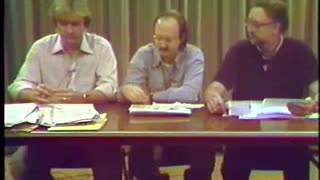 58:42
58:42
The Memory Hole
4 days agoWhat Really Happened in Dallas with the KKK
4713 -
 5:49:05
5:49:05
Akademiks
16 hours agoDrake Next Move - Whats next?? Did Lil Baby Listen to Me? Diddy and Family Preparing for Indictment?
49.7K21 -
 1:56:06
1:56:06
TimcastIRL
1 day agoTrump Raises RECORD $52.8 MILLION In One Day, Bonus Uncensored Show w/Laura Loomer | Timcast IRL
66.8K299 -
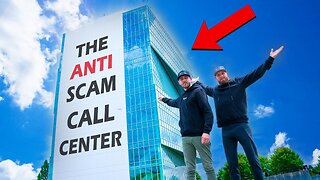 23:19
23:19
Scammer Payback
4 days agoWe Created the First Ever 𝗔𝗡𝗧𝗜-𝗦𝗖𝗔𝗠 Call Center
197K238 -
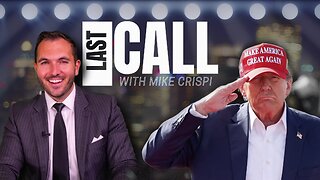 1:11:09
1:11:09
LFA TV
18 hours agoTRUMP GUILTY…OF LOVING AMERICA! Ft. Hayley Caronia & Vish Burra | LAST CALL 6.1.24 8PM EST
56K25 -
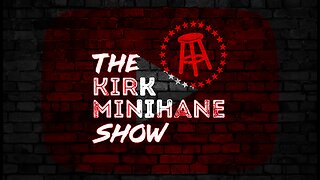 1:02:02
1:02:02
The Kirk Minihane Show
9 hours ago420 Show
35.6K2 -
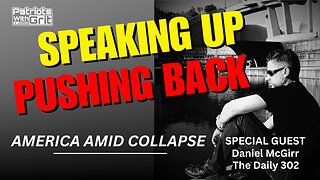 1:06:35
1:06:35
Patriots With Grit
8 hours agoSpeaking Up, Pushing Back | Daniel McGirr
37.9K6 -
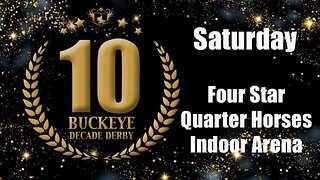 56:19
56:19
Total Horse Channel
2 days ago2024 Buckeye Reining Series | Saturday Night | 7:30 pm EST
43.8K3 -
 1:15:38
1:15:38
Steve-O's Wild Ride! Podcast
2 days ago $0.22 earnedG Eazy Opens Up About Falling Off - Wild Ride #217
50.6K14 -
 18:44
18:44
We Profit with Stock Curry
6 days agoUltimate Advice for Teens & Young Adults
56.4K14